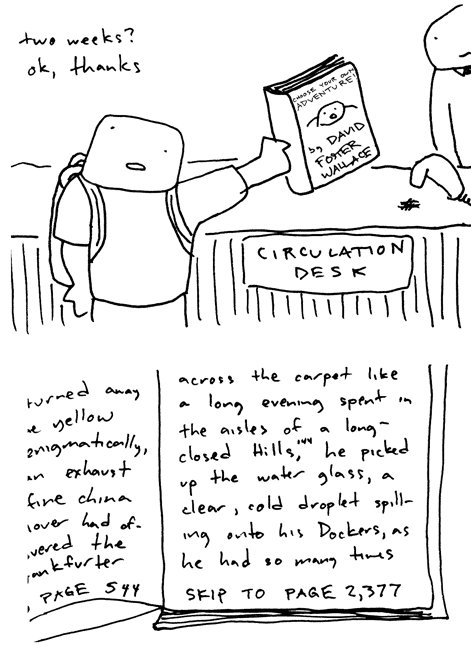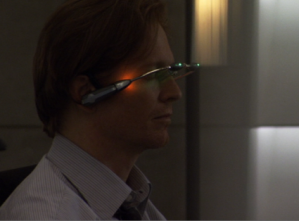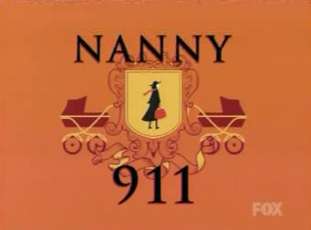We are mad men!
November 9, 2009
I couldn’t watch the season finale of Mad Men last night because it’s on past my bedtime, but I caved and bought the season pass on iTunes a few weeks ago after being totally, totally reeled in by Season 2 on Netflix. So, now I’m going to watch the Season 3 finale and mourn the lack of Don Draper in my life until Season 4 starts. Also, tomorrow is the start of the 40th Season of Sesame Street! What better way to celebrate than with this Mad Men skit!
We have a lot invested in this ride!
September 20, 2009
My dear friend Adam wrote a profound piece in his blog today about marketing, art, and of course, Bill Hicks – namely that although, yes, marketing has its demonic dark side, the man could have benefited from targeting his demographic. I’m still mulling over Adam’s thoughts and their implications for art – should we as artists eschew certain venues in favor of others where we think people will “get it?” Where does that kind of thing go over the line from targeting to pandering?
Anyhow, I also feel like my own demographic would enjoy a positive drug story. This also, by the way, sums up my own religious philosophy and I’ve never even taken LSD.
We Are the World.
June 26, 2009
In memory of Michael Jackson’s passing, I’m posting this here video of one of the most influential songs of my childhood. Yes, MJ managed to touch even those of us hippie children who spent more time listening to Free to Be You and Me than Thriller.
Special bonus track.
Infinite Wisdom.
June 26, 2009
I can’t access the Infinite Summer webpage here at the library, which is just ridonkulous. Perhaps it’s some sort of public-health measure “This website has been deemed too nerdy for safe library consumption.” In any case, I am using their internet capabilities (which are lacking in my home at this point in time) to share my reading strategies for this, my second go through of Infinite Jest.
For first time readers, totally ignore this. Just enjoy the madness.

I have heard of some individuals tackling the beast with three different colors of highlighter. Me, I’ve got my IJ specific turquoise fountain pen, a regular ballpoint, and Post-It flags. The latter was bought specifically for this endeavor after four pieces of paper sticking up got a bit confusing as to what was a bookmark and what was a reference. Yes, not only does this endeavor require investment in the book itself, like a mountain climb, you need good supplies.
The method I’ve got that’s working out for well me goes as such: I sit down and get all nice and cozy with IJ with my pens. Any thing I need to look up later gets circled in the blue pen, and then referenced in my journal. Things I simply want to remember/comment on get underlined with the regular black ballpoint.

The intermediary between the book and the journal, so I don’t have to go back through the book to find all of the circled terms, is the bookmark. Items are crossed off as soon as they’ve been looked up. I’ve got a bit of a backlog at the moment due to aforementioned lack of internet access in the home. I also lack an actual physical dictionary, having been depending on Merriam Webster (like Hal, I am primarily an OED man, but that shit requires paid subscription. Curses!) online for years now. I do prefer M-W to Dictionary dot com, which I find to be inferior.

Open pages, where you can see the IJ pages in the journal next to the regular blatherings from my fool mind there in black. I’m usually a black-ink only lady, so it’s wicked easy to open up the journal and find my IJ references.

Typical page. Like everybody else in the known universe, despite having a large vocabulary and what my partner would refer to as a fairly encyclopedic knowledge of “everything” (I can kick your ass in Trivial Pursuit, oh yes I can), this book makes me feel almost retarded at times with references that I don’t know. For first reading, this are very easily passed over without being detrimental to the greater understanding of the book, but on this my second go-through, I’m definitely picking at the details.

Use of the Post-It flags for infamous Endnote 24. The other flag I’ve got in there right now is the endnote discussing Les Assassins des Fauteuils Rollents. At this point, I’ve far surpassed the 75 pages for the week. I’m not so much a reader as an eater of books. I’ve also finished another novel concurrent to my IJ endeavors. I’m not double-fisting right now, having a bit of free time and most importantly – mental energy – but I’m heading out to Portugal next week, and while I imagine that the flight will include some cozying up with Mr. Wallace, I also imagine that at some point my poor brain will need a break and reading will be supplemented with something lighter (both literally and metaphorically – this shit is heavy in every possible way).
I hope you fellow nerds have appreciated my pro-tips. I would read yours, but the library is cramping my style over here. Go figure that I’ll have to go to Starbucks later on to catch up. The world, as DFW would be sure to agree, makes no sense.
Gettin’ my Infinite On.
June 20, 2009

Despite the fact that I do have a blog specifically for books, I am going to blog about the Infinite Summer project over here, since that other blog is specifically for books that Kat & I have finished reading. I’ve read Infinite Jest one and a half times before: the first time, I only got half-way through. My ex bought it because friends of his had raved about it, and being a literati, he needed to see what the hype was about. He never finished it. I don’t think he even liked it, but it’s hard to say. Infinite Jest is lovable, but I’m not sure if it’s quite likable. Anyhow, intrigued by its vast size (I like big books and I can not lie!), I tried to succeed where he had failed…
And I failed.
Other large books require endurance. I’ve read plenty a long book in my day. Cryptonomicon was soundly defeated in mere weeks (as was Anathem – Neal Stephenson is nothing if not verbose). House of Leaves is itself a book that might require a “support group,” but I’ve managed it several times on my own. I have read the entire Bible. It’s actually safe to say that the larger a book is, the more I am intrigued by it and thus, the more likely I am to read it. Skinny books just seem… too easy. I want a nice meaty book. Infinite Jest requires more than endurance. It requires commitment. A commitment that no other book I have ever read has managed to wrench from me. (Which probably explains why I failed at reading Ulysses.) Generally, I am a committed reader, but Infinite Jest truly demands that you consider the book itself to be a graduate seminar.

David Foster Wallace “Choose Your Own Adventure” by Toothpaste for Dinner
The second time I attempted, and the first time I succeeded in finishing, Infinite Jest was after David Foster Wallace’s death in September. I read his obit and ordered a copy of Infinite Jest in the same day. Funny how that works. I did the same thing with Vonnegut – his passing reminded me that I had meant to read his books, and so, I did. It’s my own sort of tiny little tribute, I suppose. This time, I sort of knew what I was in for. Sort of. And I managed to make it to the end! And I found out that yes, it does require every last brain cell in your head (and perhaps a few borrowed from others, if you can manage it), but yes, it is also totally worth it.
So, now I’m going through for my second and a halfth time. The Infinite Summer group doesn’t technically start until Sunday… but I’m in the middle of a move and I’m not sure how much time I’ll have to do anything in the next ten days or so. I started last night and this time, I’m going through with two different pens, two bookmarks, a notebook, and Wikipedia. In the first 25 pages, I already tracked down what might be the most obscure reference to Gravity’s Rainbow (1) EVER. (Bonus points if you can find it.) I’ll start sharing these sort of things after the spoiler-warnings on the Official Schedule (Year of the Infinite Summer Reading Project) have passed. Which means there will probably be a few Wallace-sized entries in the middle of July as I’ll spend the first half of the month in Portugal where I might not have anything better to do than read gigantic books, but I will have better things to do than write about gigantic books on the internet.
1)This would be where I put the footnote that Infinite Jest inspired me to read Gravity’s Rainbow, which I ordered at the same time, having heard that it had inspired DFW and that the two held structural parallels (that structure, of course, being the parabola). And that also took me one and a half times to read, and a serious commitment. I only managed to get through by creating a cross-referenced list of the “cast of characters” which, if it sounds simple, you haven’t read Gravity’s Rainbow. Again, the commitment paid off. I will even probably attempt more Pynchon in the future.
But for now, I’m moving and then I’ll be off in Portugal for a few weeks, and I can only fit one brick sized book in my carry-on without requiring the aid of a sherpa. At least I won’t have to worry about not having anything to read on my trans-Atlantic flight.
It’s like asking the Buddha to come into a toilet.
June 13, 2009
Perhaps the greatest talk on the Buddha ever given. Tsem Tulku makes me feel like I’m in good company for possible re-incarnation as a cranky old goat. I want to hug him, but I fear he might shame me.
Sci-Fi & Religion.
June 4, 2009
 A few nights ago, Nuno and I watched the Battlestar Galactica movie Caprica; a chronicle of the creation of human-consciousness possessing robots. Not mere artificial-intelligence – actual human consciousness that was downloaded into robot bodies. This idea of a non-human non-living being possessing actual consciousness forms the backbone of Battlestar Galactica, the ensuing conflict being: if you have human consciousness without human mortality, what becomes the relative value of humanity as a collection of living, dying human beings?
A few nights ago, Nuno and I watched the Battlestar Galactica movie Caprica; a chronicle of the creation of human-consciousness possessing robots. Not mere artificial-intelligence – actual human consciousness that was downloaded into robot bodies. This idea of a non-human non-living being possessing actual consciousness forms the backbone of Battlestar Galactica, the ensuing conflict being: if you have human consciousness without human mortality, what becomes the relative value of humanity as a collection of living, dying human beings?

The story is thought provoking, but still, as a sci-fi TV show set on another planet in a distant future, the morality is rather predictable and it’s often the stilted dialogue that requires the greatest suspension of disbelief. Indeed, I tried to get into BSG while Nuno was watching the series, but found that the writing was my biggest stumbling block in developing anything more than a passing interest. Anyhow, in the BSG universe, mortality is found to be fundamental to what it means to be truly human and the “cylon” copies are a threat to a linear, progressive future. Caprica goes back fifty years before the start of BSG to detail the ideas behind the initial creation of the cylons.

Caprica details a society torn apart by religious conflict between the polytheistic majority and an emerging group of monotheists, including a terrorist organization which resorts to suicide bombing to “cleanse” the infidels and show them “the way.” What’s most interesting here is that these very real, very timely religious issues are dealt with sensitively and intelligent by a TV show – and a Sci-Fi TV show at that. Somehow, Sci-Fi/Fantasy is a natural genre for religious narrative: His Dark Materials, the Narnia series, the underlying Mormon themes of the Twilight series…

Very often these stories are targeted towards “young adults” as adult media tends not to touch serious religious allegory with a ten foot pole (The DaVinci Code notwithstanding; I am referring to the discussion of actual religious philosophy and not with “doctrine challenging discoveries.”). It seems to feel “safer” to writers to couch religious narrative in fantasy; it keeps everything on the hypothetical level. Your ideas are automatically free from being judged on the basis of truth if you’re on another planet. Religious thought feels somehow less thorny when confined to “What if?” rather than shelved with “This is.” That said, while I enjoyed Caprica, I would really love to see a show tackle religious ideas right here on Earth.





